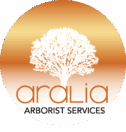June 23, Pompositticut Community Center, Stow: A new slate of board members was elected tonight at the OARS annual meeting, emceed by Executive Director Matt Brown, and five members were honored for their volunteer work during the past year. (OARS is the Organization for the Assabet, Sudbury, and Concord rivers). The organization, established in 1986, works to maintain the health of the three rivers, sometimes abbreviated as SuAsCo, in the thirty-six cities and towns comprising their watersheds.
The water quality volunteers honored were: Lisa Fierce, volunteering since 2008; Ann Wachur, since 2017; Kim Kastens of Acton, since 2014; and Chester “Ozzy” Osbourne, who paddled eighty-six miles of the rivers in forty-eight hours. Also honored was Derek Thoresen, who attends every OARS event and serves as a liaison for the DuPont company, whose volunteers installed a rain garden in Marlborough in 2023. In the past year, OARS volunteers pulled up vast amounts of the invasive water chestnut plants, disposed of four hundred pounds of trash, and worked to remove two obsolete dams.

Following the awards, State Senator Jamie Eldridge, co-chair of the Mass. Clean Energy Caucus, spoke about upcoming bills to protect water resources. Then Kim Kastens, a retired research professor and now chair of the water committee of Green Acton, presented a slide show detailing increasing salinization in the watershed over the past fifty years. (Dr. Kastens is also an associate editor of the Acton Exchange.) She showed how volunteer water testers, using handheld devices to measure electrical conductivity, recorded the salt content in brooks and rivers in different locations and times of the year. Rising salt levels can adversely impact zooplankton, spotted salamanders, wood frogs, and other aquatic organisms. In the SuAsCo, as throughout New England, the long term trend of increasing salinity is largely attributed to road salt or “deicer.”

Notable was that the salt content remained high even after the seasonal applications of road deicers had dissipated, which Kastens and her collaborators interpret as indicating that much of the salt is coming into the streams from groundwater. The distribution of the saltiest samples suggests that much of the salt in Nashoba Brook has come from major roads and large commercial parking lots near the headwaters around routes 110 and 495. In the Fort Pond Brook tributary system,the highest conductivity water is next to the Acton Department of Public Works facility, where contributions could come from the washing of trucks, disposal of plowed snow, and pollution from the capped, but unlined, landfill. Possible remedies for SuAsCo towns and businesses could include improving storage of road salt, moving plowed snow away from wetlands, and replacing sodium chloride with sand or magnesium chloride — or even beet juice. At the end of her talk, Kastens proposed that OARS convene a “Road Salt Summit,” bringing together people concerned about aquatic ecosystems, drinking water quality, and road safety, to work towards a regional strategy for road salt pollution mitigation.

Upcoming events for OARS include River RATS Paddles on July 9 in Billerica and July 17 in Maynard, and water chestnut pulls on July 12 in Billerica and July 19 in Bedford. OARS also conducts local Water Wise workshops for children, and summer camps in Hopkinton, Stow, and Lowell.
James Conboy writes about sports and outdoor activities for the Acton Exchange.













